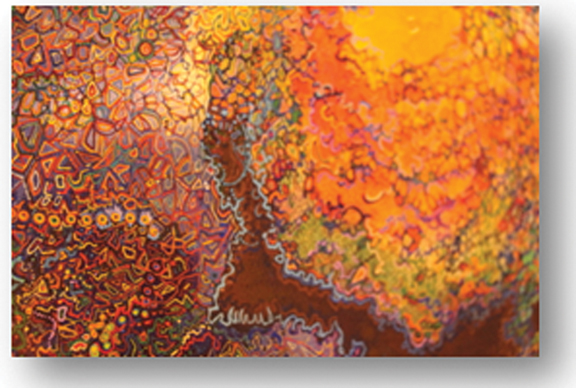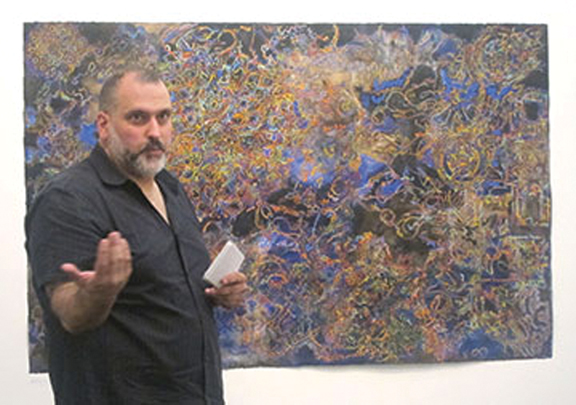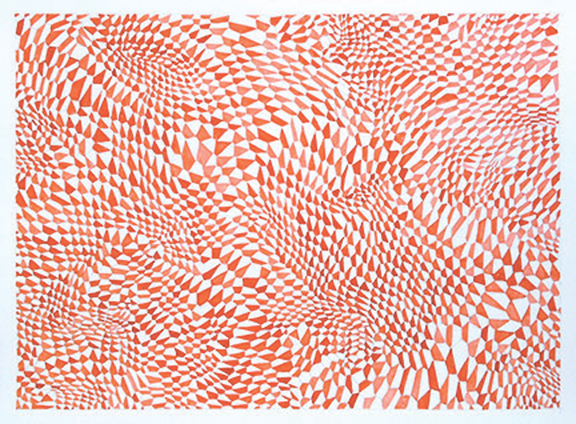Art is the creative outlet in which humans are able to express themselves, release frustrations, and communicate emotion in a productive and truly unique fashion. Art is not only meant to be acknowledged, shared and experienced, but also preserved and celebrated. The unfortunate truth is that the arts are in danger. In this great city of New York there exists the constant threat of budget cuts and limited funds which contribute to the increasing struggle of a “starving” artist. Luckily, there are non-profit organizations like Red Hook’s own Kentler International Drawing Space, which has been religiously dedicated to promoting and showcasing artists since 1990.
Located at 353 Van Brunt Street (near Fairway), the building currently occupied by The Kentler International Drawing Space was built in 1877 by the Kentler family. The building, even then, was serving the community then in a different way as a store for men’s accessories. Today, the venue features five exhibitions per year and offers up to “200 drawings and works on paper available for viewing by the general public by appointment” (as per it’s brief brochure description).

This fall The Kentler International Drawing Space has chosen to highlight two artists with solo exhibitions; David Ambrose: Surface to Surface and Michael Kukla: Hex & Grid. The choice to exhibit these two particular artists at the same time was an interesting one. Both artists are inspired by nature and its intricacy. However the ways in which they express this inspiration through their individual artistic works differ completely from one another.
On Saturday Sept. 21st Kentler held an opening reception and Artists Talk where the general public could come and observe the artworks, listen to both artists speak in depth about their work, and gain more information about the exhibition and the gallery.
“This is an amazing space,” an elderly woman in attendance chimed as she explored the gallery. Around 4:30 pm, roughly 25 people gathered in the large back room where the walls were adorned with Ambrose’s work. For the next 15-20 minutes Ambrose spoke about what inspired his creations, explaining the complex process he took to create the pieces included in Surface to Surface. According to Ambrose, patience plays a big part when it comes to his art. His process consists of painting from front to back and back to front and the trick is making sure the paint is perfectly dried.
David Ambrose is very poetic, feels deeply connected to his work, and calls himself old fashioned because he names individual pieces with titles such as “A Sideways Glance in Venice,” “Pockets of Flesh,” and “The Architectural Embers of England.” Ambrose says, “As far as the titles go, I read a lot and pull words away from the writing.” His work is also influenced by the Italian renaissance and other memorable points in history.
“Color is my drug of choice,” Ambrose explains to the group of art lovers and supporters. His love of color is evident in the collection of works included in Surface to Surface which are majorly vibrant and mostly made from watercolor and gouache, (a type of paint consisting of pigment), on pierced paper. He claims to treat his art like pieces of scar tissue and has used his own body and skin as inspiration for his work.

Another notable fact about Ambrose’s work is the existence of layers and distance. Upon first glance the larger scale tells a tale filled with adventure. The viewer can see shapes, planets and the ocean all colorfully laid out on paper. When taking a more focused and closer approach the figures begin to change and develop into actual characters. Ambrose creates pictures within a picture and all in attendance seemed quite fascinated by his work as they listened intently to what he had to say.
Directly following Ambrose was Michael Kukla and his Hex & Grid. Kukla surprised everyone by presenting a musical introduction that was inspired by the artwork itself. The smooth sounds of guitar, saxophone and clarinet echoed throughout the gallery as the group enjoyed Kukla’s work. The serenade set the tone for a mellow environment created by the artwork and by the time the musicians were finished and Kukla began his talk, everyone seemed to be in a relaxed and pleasant state.
Kukla, born in Prague Europe, takes a more systematic approach to his work than Ambrose. He explores the beauty of restriction using only certain shapes and industrial colors with some intense splashes of bright red appearing sporadically. Kukla experiments with shapes – specifically the hexagon – because of its flexibility and the various ways it can be stretched, skewed, duplicated and altered to create beautifully artistic intricate patterns. He claims to enjoy the hexagon because even though it seems to be limited, it isn’t at all. “It’s imperfect.” He recognizes this imperfection in nature as well and draws inspiration from it. Kukla explained that he usually starts off in the middle with one hexagon and then builds by connecting more. The dimensions of his work are altered when adding color to monochromatic pieces. Red is a recent addition to the colors used by Kukla. To him, red represents beauty and intensity. He recalls a vacation in Spain that inspired his sudden usage of the color.

Both Kukla and Ambrose exhibit great effort into their art and each piece is evidence of that. At the end of the talk the audience was invited to stay and enjoy more sweet sounds by Kukla’s musical friends and indulge in refreshments in the form of baked goods and wine donated to the gallery.
“I thought it was great! Good crowd and informative. Both of these artists are really good people and easy to talk to…I thought people paid attention and were very interested so that’s a good thing”, said Sally Mize, Program Manager of The Kentler International Drawing Space, at the conclusion of the event.
It is more than a good thing when people show interest in supporting the arts and local artists; it’s a great thing and it’s a necessary thing. For more information on the either of these artists, The Kentler International Drawing Space, events, and future exhibitions be sure to visit the website: http://www.kentlergallery.org/ or stop on by Thursday – Sunday from 12:00pm – 5:00pm when the gallery is open to the general public.








